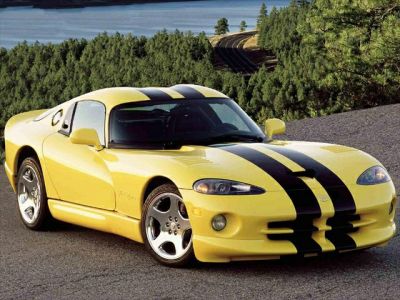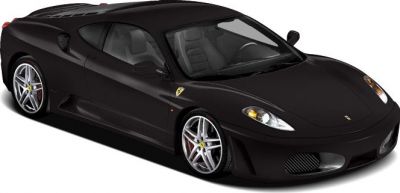 2007 Ferrari F430 Challenge Dimensions, Size & Specs
2007 Ferrari F430 Challenge Dimensions, Size & SpecsMeasurements of the 2007 Ferrari F430 Challenge, engineered for optimal performance and comfort
| Dimensions | |
|---|---|
| Length: | 4512 mm177.6 in14.8 ft |
| Width: | 1923 mm75.7 in6.3 ft |
| Height: | 1184 mm46.6 in3.9 ft |
| Weight Specifications | |
| Curb Weight: | 1225 kg2701 lbs |
The Ferrari F430 Challenge, produced between 2007 and 2010, represents a specialized track-focused iteration of the iconic F430 coupe. Designed for high-performance racing and built as a customer race car, the F430 Challenge combines Ferrari's racing heritage with precision engineering to deliver an agile and lightweight sports coupe. The vehicle measures 4512 mm (177.6 inches) in length, 1923 mm (75.7 inches) in width, and stands at a low profile height of 1184 mm (46.6 inches). This compact yet aggressive stance contributes to its aerodynamic efficiency and handling prowess on the track. Weighing in at 1225 kg (2701 lbs) curb weight, the F430 Challenge benefits from weight-saving measures including a stripped-down interior and racing-specific components, enabling rapid acceleration and agile cornering. As a production period model from 2007 to 2010, the F430 Challenge holds a distinctive position in Ferrari's lineup, blending the aesthetics of a road-legal coupe with race-bred performance capabilities. Its balance of size, weight, and power makes it a standout in the segment, appealing to enthusiasts looking for a pure driving experience and a competitive edge on race circuits. Overall, the Ferrari F430 Challenge encapsulates the essence of Ferrari's dedication to speed, precision, and motorsport excellence.
Discover the standout features that make the 2007 Ferrari F430 Challenge a leader in its class
Have a question? Please check our knowledgebase first.
The Ferrari F430 Challenge, produced between 2007 and 2010, is a purpose-built race version of the F430 coupe. It measures 4512 mm (177.6 inches) in length, 1923 mm (75.7 inches) in width, and stands 1184 mm (46.6 inches) tall. These dimensions contribute to its aerodynamic profile and handling characteristics, optimized for track performance. The car's width accommodates wider racing tires, providing increased grip and stability, while its low height improves center of gravity for enhanced cornering.
The Ferrari F430 Challenge weighs approximately 1225 kg (2701 lbs) curb weight, which is significantly lighter than the standard F430 coupe. This weight reduction is achieved through the use of lightweight materials such as carbon fiber and the removal of non-essential interior components to meet racing regulations. The lighter weight improves acceleration, handling responsiveness, and braking efficiency, making the F430 Challenge a more agile and competitive car on the track compared to the road-going F430.
The Ferrari F430 Challenge, with its length of 4512 mm (177.6 inches), width of 1923 mm (75.7 inches), and height of 1184 mm (46.6 inches), generally fits well within a standard home garage, which is typically about 6 meters (20 feet) long and 3 meters (10 feet) wide. However, due to the car's width, which is wider than many standard vehicles because of its racing tires and aerodynamic bodywork, careful maneuvering may be required when parking. Enthusiasts often customize their garage space to comfortably house a car of this stature.
Compared to its predecessor, the Ferrari 360 Challenge, the F430 Challenge is slightly larger in all dimensions. The F430 Challenge measures 4512 mm (177.6 inches) in length and 1923 mm (75.7 inches) in width, showcasing an increase in both metrics to improve aerodynamics and accommodate updated racing components. The 360 Challenge was shorter and narrower, which made for a slightly smaller footprint. The evolution in size reflects Ferrari's focus on improving downforce and stability at higher speeds with the F430 Challenge.
When compared to similar track-focused sports cars like the Porsche 911 GT3 RS or the Lamborghini Gallardo Super Trofeo, the Ferrari F430 Challenge stands out with its relatively low height of 1184 mm (46.6 inches), contributing to a low center of gravity. Its width of 1923 mm (75.7 inches) is competitive, aligning well with wide track cars, while its length of 4512 mm (177.6 inches) is moderate. The F430 Challenge’s lightweight 1225 kg (2701 lbs) curb weight places it favorably in terms of agility and power-to-weight ratio compared to heavier rivals, emphasizing Ferrari’s race-focused engineering.
While the exact ground clearance for the Ferrari F430 Challenge isn't typically specified in general data, track-oriented versions like this usually feature reduced ground clearance compared to road models. This lower stance improves aerodynamics and stability by reducing airflow underneath the car and lowering the center of gravity, which enhances cornering capabilities and response on smooth track surfaces. However, the low clearance requires careful navigation over uneven surfaces and prevents comfortable use on regular streets.
Yes, the Ferrari F430 Challenge maintains the same wheelbase as the standard F430 road car, which is approximately 2650 mm (104.3 inches). Keeping the same wheelbase allows for stability at high speeds while preserving the car’s balanced handling characteristics. The consistent wheelbase facilitates precise tuning of suspension and aerodynamics on the Challenge version, making it highly responsive and predictable on the race track.
The Ferrari F430 Challenge is a race-prepared version of the F430 and as such has a stripped-down interior focused on weight saving and safety rather than comfort or space. It generally accommodates a single driver with a racing bucket seat and harness. The cockpit is designed for optimal control rather than passenger comfort, meaning interior space is quite limited, especially compared to the production F430 coupe. There is no rear seating, and minimal room for cargo, reflecting its pure racing intent.
The Ferrari F430 Challenge was aerodynamically enhanced compared to the road F430, with additional front splitters, rear diffusers, and a lowered ride height. These components give the car a slightly more aggressive physical profile while maintaining the core dimensions of length, width, and height. The enhanced aerodynamic parts improve downforce and cooling but do not significantly alter absolute measurements. Instead, these subtle changes help the car cling better to the track and improve lap times.
The Ferrari F430 Challenge is specifically built as a track-only race car and is not street legal in most countries. Because it is not intended for road use, its design prioritizes performance over daily usability, comfort, or compliance with street regulations. This affects size considerations in that the car can have a very low ride height, wider racing tires, aerodynamic components, and stripped interiors without needing to adhere to road vehicle standards such as bumper heights or pedestrian safety requirements.
Discover similar sized cars.

| Production: | 1996-2002 |
|---|---|
| Model Year: | 1997 |
| Length: | 4488 mm176.7 in |
| Width: | 1923 mm75.7 in |
| Height: | 1219 mm48.0 in |

| Production: | 2023-present |
|---|---|
| Model Year: | 2023 |
| Length: | 4525 mm178.1 in |
| Width: | 2236 mm88.0 in |
| Height: | 1248 mm49.1 in |

| Production: | 2007-2009 |
|---|---|
| Model Year: | 2007 |
| Length: | 4512 mm177.6 in |
| Width: | 1923 mm75.7 in |
| Height: | 1214 mm47.8 in |

| Production: | 2004-2009 |
|---|---|
| Model Year: | 2005 |
| Length: | 4512 mm177.6 in |
| Width: | 1923 mm75.7 in |
| Height: | 1214 mm47.8 in |

| Production: | 2011-2014 |
|---|---|
| Model Year: | 2011 |
| Length: | 4509 mm177.5 in |
| Width: | 2093 mm82.4 in |
| Height: | 1199 mm47.2 in |

| Model Year: | 2016 |
|---|---|
| Length: | 4487 mm176.7 in |
| Width: | 2216 mm87.2 in |
| Height: | 1204 mm47.4 in |

| Production: | 1997-2002 |
|---|---|
| Model Year: | 1998 |
| Length: | 4490 mm176.8 in |
| Width: | 1920 mm75.6 in |
| Height: | 1190 mm46.9 in |
